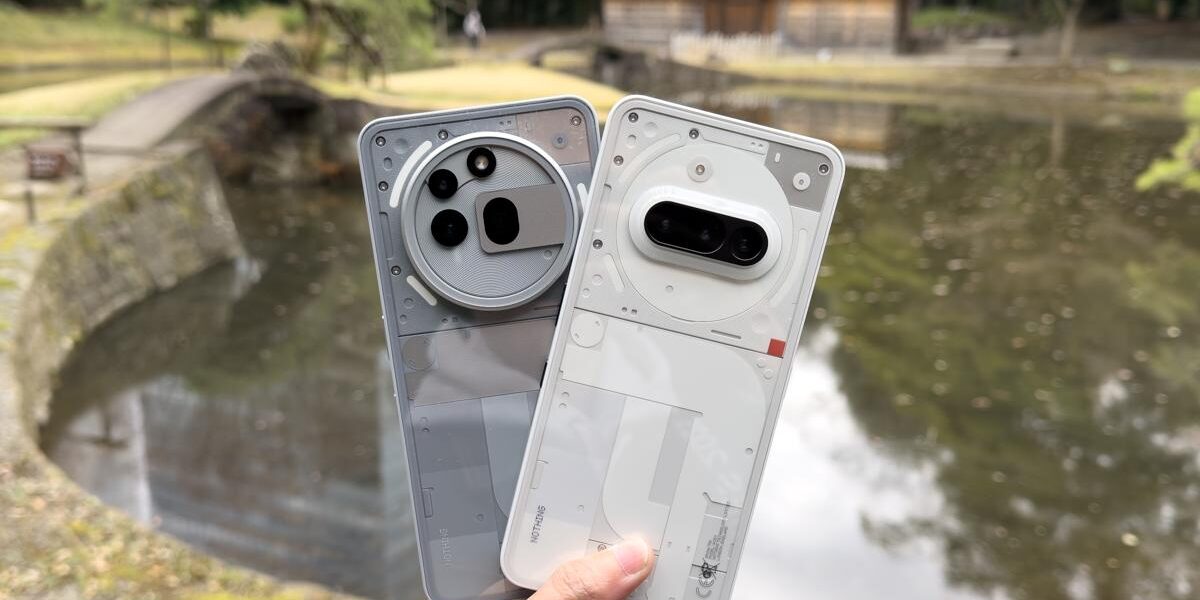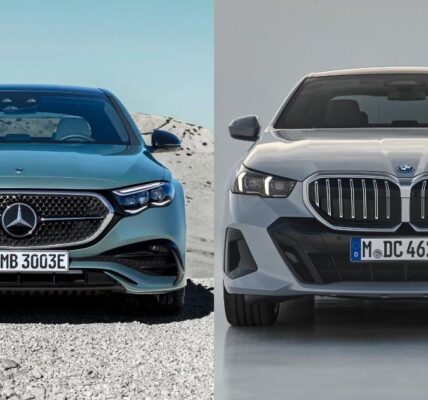Nothing Phone (3a) and Phone (3a) Pro review: A big nothing-burger

Double of Nothing
Nothing has taken a slightly different approach this year. The brand opted to launch the midrange Nothing Phone (3a) and Phone (3a) Pro before the company’s top-tier Nothing Phone (3). While we wait for its flagship offering, we look at these two midrange alternatives first.
Both phones are similar with the same Qualcomm Snapdragon 7s Gen 3 processor, 6.77-inch displays, 5,000mAh batteries and IP64 ratings. However, they also received major upgrades, with both phones now getting optical zoom lenses.
Nothing also differentiated these handsets by their level of zoom magnification. The Nothing Phone (3a) Pro uses a 50MP periscope lens that offers 3x optical zoom, while the Nothing Phone (3a)’s 50MP telephoto lens offers only 2x optical zoom.
TL;DR version:
There are minor upgrades here and there, but if you don’t really require a telephoto lens, it might be worth looking at other options that offer better value.
Note: Find it at Nothing.tech, Shopee Nothing Official Store and Lazada Nothing Flagship Store.
The polycarbonate backs on the Phone (3a) and Phone (3a) Pro have been replaced with real glass, upgrading their aesthetic. Both phones also have an improved IP64-rated dust and water resistance.
Priced at S$549 for the Nothing Phone (3a) and at S$649 for the Nothing Phone (3a) Pro, can these phones match up to our high expectations after their predecessor, especially now that they are priced even higher than before? Let’s find out.
|
Nothing Phone (3a) Pro |
Nothing Phone (3a) |
|
 Pro thumbnail.jpg)
|
 thumbnail.jpg)
|
|
| Launch SRP | ||
|---|---|---|
| Operating system |
|
|
| Processor |
|
|
| Built-in Memory | ||
| Display |
|
|
| Camera |
|
|
| Video Support | ||
| Connectivity |
|
|
| Storage Type | ||
| Battery |
|
|
| Dimensions | ||
| Weight |
Coming full circle

While the Nothing Phone (3a) looks similar to its predecessor with the same horizontal camera set-up, the Nothing Phone (3a) Pro attempts a new look with a circular rear camera bump.
This circular camera array protrudes more, but it helps house the new periscope zoom lens. We think it’s well-designed: it has a curved edge that prevents it from snagging on fabric when the phone is put away.

Nothing stated that the aluminium used to craft the mid-frame is 100% recycled, but that’s a little more nuanced. The frame in question refers to its internal chassis. A plastic coating has been sprayed with a scratch-resistant layer, which explains why the phones have no antenna lines. The buttons, however, are 100% recycled aluminium.
You will notice a new button under the power button, which Nothing calls the Essential Key. We’ll discuss it later since it is a gateway to new software features.
The phones are also a little heavier than before, coming in at 201g [Phone (3a)] and 211g [Phone (3a) Pro]. We think this trade-off was made because of the additional telephoto lenses.

The phones are sandwiched between two layers of glass, both of which are Panda Glass. Panda Glass is an alternative to Corning’s Gorilla Glass and we’ve seen it used in other midrange smartphones before, like the OPPO Reno 11 F 5G.
It does a decent job of protecting against scratches and scuffs, and as long as you’re not purposely putting a diamond or something above a level 7 on the Mohs scale of hardness on it, the glass should be fine.

Both phones have the same 6.77-inch Flexible AMOLED display (2,392 x 1,080 pixels resolution) and a 120Hz adaptive refresh rate. If you activate gaming mode, the screen goes up to 1,000Hz touch sampling, and the 2,160Hz PWM frequency offers lowered flickering (which can help reduce viewing fatigue).
Both displays can also reach 3,000-nits peak brightness, so using these phones in harsh afternoon sunlight is no issue.
Everything’s topped off with an IP64 dust and water resistance rating, which is a nice upgrade over the Phone (2a)’s IP54 rating.
Nothing changed nothing

Let’s discuss the Glyph Interface first. Essentially, nothing has changed here. You still have 26 individually addressable zones on the rear, all surrounding the circular camera bump/design.
Features like Flip to Glyph, Glyph Timer, Glyph Progress and Glyph Volume are all present, although we still don’t get the glyph charging progress meter. At this point, we’re unlikely to see it on the midrange models.
We’ve covered how most of the features work in our Nothing Phone (2) review, and while it’s a tad old, most of it still works the same, so you can check it out here if you want.
The phones run on Nothing OS 3.1, the company’s new skin of Android 15. With three years of software updates and six years of security updates, it’s a good deal for a midrange phone.
Nothing OS 3.1 is excellent as well. It’s a refined, sleek operating system that is incredibly well-optimised and doesn’t suck too much battery. I’m a big fan of the monochrome dot matrix look, so Nothing’s aesthetic is right up my alley.
Nothing also has the “default” icon pack under Customisation in Settings if you prefer more colour. This OS version has a few new features, such as the Nothing Gallery, the company’s new native gallery app that offers photo editing options like filters and, of course, Magic Eraser.


I tested Magic Eraser just to see how it compares to Google’s version, and it’s safe to say that Nothing still has a very long way to go in this area.


Let’s talk about Essential Key. This new button does a bunch of stuff, but it essentially functions as a productivity tool with the new Essential Space app.
A short press takes a screenshot, where you can jot down a note and save it to the space to view later. The app will analyse the screenshot and briefly summarise the image.
A long press lets you record a voice note, which is auto-summarised when you view it again in Essential Space. This is handy for people who brainstorm or ideate out loud. Personally, I found it helpful in jotting down my half-mumbled grocery list while I check the contents (or lack thereof) of my fridge.
A double press pulls up Essential Space, which works even if your phone is locked. However, for security reasons, you will obviously need to unlock the phone.
While I think the Essential Key is a good idea and can be useful for many people, the placement feels awkward. I’ve unintentionally taken countless screenshots by accident just because I wanted to lock my phone but pressed the Essential Key by mistake.
Thankfully, it does require you to press the key again to save the screenshot; otherwise, my Essential Space would be filled with accidental junk.


Aside from that, a new Smart App Drawer feature aims to organise your app drawer intelligently by grouping similar apps and placing four of your most-used apps right on top. I think it’s not a bad idea, but it takes a while to get used to this.
Imaging performance
Even though the Phone (3a) and Phone (3a) Pro don’t have identical cameras, the lenses are generally quite similar. We’ve collated the camera specs for each phone in a handy table below.
| Nothing Phone (3a) | Nothing Phone (3a) Pro | |
|---|---|---|
| Main camera | 50MP, f/1.9 aperture, 1/1.57-inch sensor, PDAF, OIS | 50 MP, f/1.9, 1/1.56-inch sensor, dual pixel PDAF, OIS |
| Telephoto camera | 50MP, f/2.0, 1/2.74-inch sensor, PDAF, 2x optical zoom | 50MP, f/2.6, 1/1.95-inch sensor, PDAF, OIS, 3x optical zoom |
| Ultrawide camera | 8MP, f/2.2, 120˚ FOV | 8MP, f/2.2, 120˚ FOV |
| Selfie camera | 32MP, f/2.2 | 50MP, f/2.2 |
If you want a better telephoto camera, the Phone (3a) Pro might be the better option since it comes with 3x optical zoom. Otherwise, the cameras don’t differ enough to matter greatly.
The Phone (3a) Pro has a 50MP selfie camera instead of the 32MP on the Phone (3a). However, more people these days are adopting the Gen Z selfie method (ultrawide rear, turn camera, snap), so the front-facing selfie camera might not see much action beyond video calling.








Both phones are competent shooters in decent lighting conditions. Nothing seems to have toned down the oversaturation from the Nothing Phone (2a), resulting in more colour-accurate images that still retain a lot of sharpness and vibrancy.
The shots also lean towards a Leica-like colour profile, making them social media-ready and suitable for its target audience.






We’re quite impressed by the quality of the Nothing Phone (3a) Pro’s 3x optical zoom and even the 6x in-sensor zoom. There’s plenty of sharpness and detail, and colours appear consistent across shots captured with the main camera and the zoom lens.
The 6x zoom shot of the cherry blossoms particularly took me aback. There’s excellent separation between the petals and stigma against the background blur, and the photo is still very sharp.
If you told me that this photo had been taken with an actual camera, I might have believed it.




The 2x optical zoom and 4x in-sensor zoom photos from the Nothing Phone (3a) are also decent, but you’re limited with a shorter zoom range. Don’t expect to use this phone to snap close-up shots of the upcoming Lady Gaga concert if you’re seated far away.




With a 120° field-of-view, the ultrawide shots from the Phone (3a) and Phone (3a) Pro offer a nice wide shot with consistent exposure and colouration to the main camera. There is a bit of distortion, but it’s not egregious.




Low-light shots are good when there’s sufficient lighting. In darker situations, the phones brighten the image considerably without encountering any major loss of detail or resolution. Even in challenging shots with multiple bright light sources, the phones are able to handle the exposure correctly and avoid any blown-out highlights. Any darker and the phone might start to struggle to compensate.
Benchmark performance
Nothing is moving away from MediaTek chips with both the Phone (3a) and Phone (3a) Pro packing the Qualcomm Snapdragon 7s Gen 3 processor.
While it’s not particularly new, we haven’t seen it on too many phones besides the Redmi Note 14 Pro+ 5G, so we don’t have any recent direct competitors against which to benchmark.
As such, we will be pitting the phones against other close competitors both in terms of specs and price range, such as the Poco X7 Pro, Poco F6 and Honor 200.
Putting it to the test
To find out how the competitors line up specs and price-wise, check them out in this link.
To find out more about the tests we conduct and what they relate to, we’ve jotted them down here.




Benchmark performance remarks
These benchmark performance numbers are quite similar to the Nothing Phone (2a)’s and Honor 200’s, while losing out slightly to the two Poco phones. At the S$700 price range, this level of performance doesn’t feel like it’s good value-for-money. It’s alternatives are either more affordable, or you can find significantly greater performance for just a little bit more money.
Despite that, the phones do run smoothly with no hiccups or issues when gaming or browsing the web with multiple tabs.
Battery Life
Our battery benchmark uses PCMark for Android’s Work 3.0 Battery Life test to determine a modern Android-based smartphone’s battery uptime in minutes. This controlled benchmark simulates real-world usage with a combination of both web and social media browsing, video and photo editing, parsing data with various file formats, writing (on documents), and more.

Even though the 5,000mAh battery capacity for both phones remain the same as from the Phone (2a), the Phone (3a) and Phone (3a) Pro have managed to eke out a good 1-2 more hours. Nothing has always stunned us with the amazing battery life on their smartphones. It’s nice knowing this hasn’t changed.
Charging speeds are also quite respectable, with 50W wired fast charge on both phones. A full charge took 50 minutes on the Nothing (3a) Pro and 52 minutes on the Nothing (3a), which is slightly faster than the Phone (2a).
There’s no wireless charging, which was easy to overlook when the Phone (2a) only cost S$499, but not when the Phone (3a) starts at S$549 and the Phone (3a) Pro retails from S$649. At over S$600, I’d definitely be expecting wireless charging even if it’s only 15W.
Lagging behind

When Nothing announced the Phone (3a) and Phone (3a) Pro, we were very excited, not least because the Nothing Phone (2a) was such a great phone that punched above its class while priced at a very reasonable level. Unfortunately, it seems that Nothing might have forgotten what made the Phone (2a) such a success.
Yes, there are upgrades, and they are good phones. The new telephoto lens is a nice addition, the upgraded IP rating offers peace of mind, and the new Essential Key and Essential Space offer a bit more productivity.
However, the target audience for midrange phones is more sensitive to price fluctuations than, say, premium flagship users with money to burn. We agree that the telephoto lens might be worth the added S$50 for the base Phone (3a), but the S$649 price tag for the Phone (3a) Pro feels out of touch especially when it’s essentially identical save for its 3x zoom lens.
People who are currently using the Nothing Phone (2a) or Phone (2a) Plus will find very little reason to upgrade to this latest generation since the gains are minuscule. There isn’t enough change to justify an upgrade, let alone make its users prioritise the new 3(a) series over other gadgetry.
If you own an older Nothing phone, we recommend waiting to see what comes in the next generation or even the Nothing Phone (3) flagship. Even users who are new to Nothing should pick up an older device for greater savings since the new ones don’t offer very much in return.

Looking at the bigger picture (of midrange options in Singapore) there are many good alternatives above and under its price tag. If you want something cheaper, you can look at the Poco X7 Pro, which offers LPDDR5X RAM, UFS 4.0 storage, and better performance benchmarks.
If a S$499 phone can offer LPDDR5X RAM and UFC 4.0 storage, there’s no excuse for Nothing to still use LDDR4X RAM and UFS 2.2 storage with a S$600+ asking price.
Don’t mind spending a little bit more? How about the Xiaomi 14T Pro, which retails for S$799 and offers flagship specs, including a 50MP telephoto lens? There’s also the Poco F7 Ultra (S$869, 256GB) if you want something powerful and big, with up to five usable focal lengths.

At this point, the Nothing Phone (3a) and Phone (3a) Pro seem to be an omen that indicates Nothing might be looking to raise prices across the board with minor upgrades to make it a more “premium” brand.
We hope we’re wrong and that Nothing continues making great phones at reasonable prices in the foreseeable future. To raise prices so dramatically, we think it would take an impressive R&D division to elevate their originality beyond their edgy counterculture aesthetic into something branded and unique.
We’ll certainly be watching the upcoming flagship Nothing Phone (3) to see how Nothing plans to move the brand forward.
| Design | Features | User-friendliness | Performance | Value | Overall | |
|---|---|---|---|---|---|---|
%20Pro%20thumbnail.jpg) Nothing Phone (3a) Pro |
7.0 | 8.0 | 8.0 | 7.0 | 6.0 |  |
%20thumbnail.jpg) Nothing Phone (3a) |
6.5 | 7.5 | 8.0 | 7.0 | 7.0 |
|
Both the Nothing Phone (3a) and Phone (3a) Pro are available in a single 12GB+256GB configuration at S$549 and S$649 respectively. The phones can be purchased at Nothing.tech, Shopee Nothing Official Store and Lazada Nothing Flagship Store.




